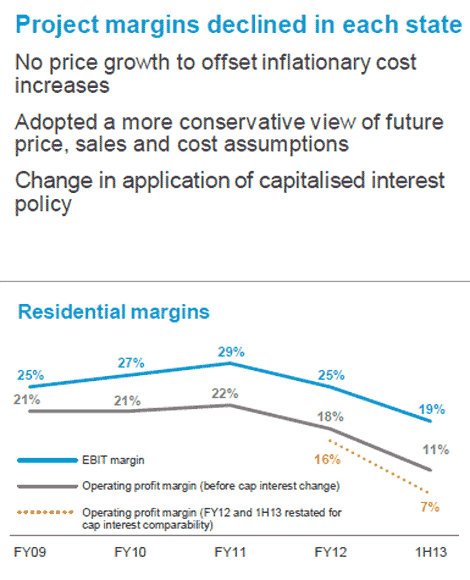Stockland pins hopes on western Sydney and WA residential projects as interim profits slump 148%
Stockland has delivered a horror set of interim results, reporting a 148% drop in statutory interim profits and a loss of $147 million to December 31.
A slump in the outer-Melbourne land market was largely to blame, with Victorian residential lot sales falling 46% from 850 to just 463.
In the space of six months, Victoria has gone from being Stockland's biggest selling region to third biggest, behind a surging WA and a declining Queensland,with NSW the fastest growing region, albeit from a low base.
Australia’s biggest new housing builder with 70 residential communities also reported a $306 million write-down across 13 residential community projects, which have now been listed for wholesale disposal.
Today’s release of results were something of a baptism of fire for new Stockland managing director and chief executive Mark Steinert – the first results briefing he has presided over since taking being appointed to the role in November and replacing the long-serving Matthew Quinn.
Ahead of delivering his market briefing on the results today, Steinert called the results “disappointing".
Speaking to the media and analysts, he downgraded this assessment to “very disappointing, driven primarily by weakness in housing market” though he says the outlook is better for the 2014 financial year (from July onwards).

Five of the impaired residential projects are in NSW, six in Queensland, one in Victoria and one in WA.
In total there are 4,700 lots across the 13 projects – about 5.5% of the 86,000 lots currently in the Stockland development pipeline.
They include long-held residential sites such as Pinny and Mawson (englobo land) and West Dapto in NSW and Birtinya, Bokarina Beach and Lake Kawana projects, all on the Sunshine Coast.
The residential business was weakest in Victoria over the six-month period, with Stockland reporting a 46% decline in Victorian settlements to 463, compared with 850 in the first half of the 2012 financial year.
This contributed to an overall 6% decline in residential settlement over the first half of 2,085 compared with 2,209 in the previous corresponding period.
There was also a 13% decline in Queensland settlements (686 to 594) – Stockland has a third of the south-east Queensland new housing market – with these declines offset by rises in lot settlements in NSW (up 101% from 210 to 422 lots sold) and WA (up 31% to 606 lots due to growth in new community launches).
Stockland will look to bring its East Leppington and Marsden Park projects on the outskirts of Sydney to market more quickly.
East Leppington in Sydney’s south-west will comprise 3,000 residential lots as well as retirement living and retail facilities with the first settlements expected in the second half of the 2014 financial year. House-and-land packages will start from $350,000.
Stockland acquired the 163-hectare residential site at Marsden Park in Sydney’s north-west from the private Winten Property Group for $165 million in January this year with the potential to deliver about 2,300 new homes. Stockland also secured the first right of refusal from Winten Property Group over an adjacent parcel of land, which has the potential for a further 2,200 homes.
Commenting on the state of the Melbourne market, Steinert said the market had been impacted by the state government efficiently delivering new land supply to the market and by the withdrawal of previous state housing grants.
“We don’t see a collapse, but this has put some downward pressure on price increases,” he said.
“The pull forward effect from early incentives effected prior levels of volume. Those incentives are no longer there, which has created recent slowing in settlements.
“Those things combined – increase in supply and withdrawal of incentives - means we have a cautious view for Victoria and Melbourne, but it is still an important part of our business and a key profit generator.
Steinert said Stockland’s south-east Queensland business – Sunshine Coast, Gold Coast and Brisbane – had been impacted by the higher Australian dollar on tourism as well as weaker employment growth.
Countering that, he said the increasing use of fly-in-fly-out workers was having a “positive impact”.
Steinert also warned that “election cycle” could also increase buyer caution while there are also concerns over the impact of the recent floods.
He highlighted that business is in a transition phase with everything up for review and he said their had already been signficant job cuts.
"Market conditions, however, are expected to remain challenging with ongoing weakness in Victoria and uncertainty in Queensland where we will watch closely to monitor any impact on already weak consumer sentiment following the recent floods," Steinert said in an earlier statement today.
Stockland expects earnings from its retail and retirement living businesses but returns from its office and industrial portfolios were expected to drop.
"We remain confident earnings will begin to improve from the 2014 financial year as we see the benefit of major new retail and residential projects coming on line,” he said.
